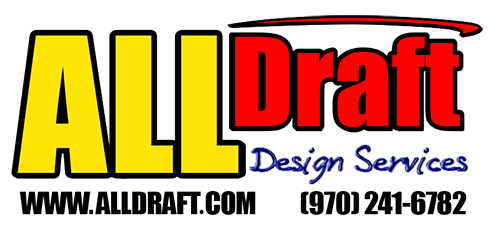In the realm of construction, precision and accuracy are paramount. From the initial blueprint to the final touches, every aspect of a construction project must adhere to exact specifications to ensure safety, functionality, and compliance with regulations. However, the reality of construction often involves deviations from the original plan due to unforeseen challenges, design modifications, or other factors. This is where the concept of as-built programs comes into play.
Understanding As-Built Programs
An as-built program refers to a set of documentation that reflects the actual conditions and configurations of a construction project upon its completion. It serves as a comprehensive record of all modifications, deviations, and adjustments made during the construction process compared to the original design plans. This documentation includes detailed drawings, specifications, and other relevant information that accurately depict the final state of the project.
The Evolution of As-Built Programs
The concept of as-built documentation has been around for centuries, albeit in less formalized formats. In the past, builders and architects would manually record changes to construction projects in written logs or through hand-drawn sketches. However, with the advent of digital technology and Building Information Modeling (BIM), the process has become more sophisticated and streamlined.
Today, as-built programs leverage advanced software tools to capture real-time data and generate detailed reports that provide a comprehensive overview of the construction project’s evolution. This allows stakeholders to assess deviations from the original plan, identify potential issues, and make informed decisions for future projects.
Key Components of As-Built Programs
A typical as-built program comprises several key components, each serving a specific purpose in documenting the construction process:
- As-Built Drawings: These are detailed drawings that depict the actual layout, dimensions, and configurations of various elements within the project, such as structural components, electrical systems, plumbing fixtures, and finishes. As-built drawings are typically created using CAD (Computer-Aided Design) software and may include annotations to highlight changes or deviations from the original plans.
- Revised Specifications: Alongside drawings, specifications outline the materials, equipment, and installation methods used in the construction process. As-built programs include revised specifications that reflect any changes or substitutions made during the course of the project. This ensures that future maintenance and renovation efforts are based on accurate information.
- Change Orders: Change orders are formal documents that authorize modifications to the original contract scope, schedule, or budget. As-built programs incorporate records of all change orders issued throughout the construction process, including the reasons for the changes, associated costs, and approvals from relevant parties. This transparency helps to mitigate disputes and ensure accountability among project stakeholders.
- Photographic Documentation: Photographs provide visual evidence of the construction progress and can be invaluable in documenting as-built conditions. As part of the as-built program, photographs are often organized chronologically to illustrate key milestones, construction techniques, and any issues encountered during the project. High-resolution images captured from multiple angles offer comprehensive documentation of the site.
- Field Notes and Reports: Field notes are written records kept by construction professionals to document daily activities, observations, and challenges encountered on-site. These notes provide valuable insights into the construction process and help to contextualize changes documented in the as-built program. Additionally, formal reports may be prepared to summarize key findings, observations, and recommendations for future projects.
Benefits of As-Built Programs
Implementing an as-built program offers several benefits to construction projects and stakeholders involved:
- Accuracy and Accountability: By maintaining comprehensive documentation of as-built conditions, stakeholders can accurately assess the performance and quality of the construction work. This promotes accountability among contractors, architects, and other parties involved in the project.
- Facilitated Maintenance and Renovation: As-built documentation serves as a valuable reference for future maintenance, renovation, and expansion projects. Having access to accurate information about the existing conditions of a building or infrastructure simplifies the planning and execution of subsequent work, reducing costs and minimizing disruptions.
- Risk Management: As-built programs help mitigate risks associated with construction disputes, claims, and legal liabilities. By providing a clear record of changes made during the construction process, stakeholders can resolve conflicts more efficiently and avoid costly litigation.
- Regulatory Compliance: Many construction projects are subject to regulatory requirements and building codes that dictate specific standards for design, construction, and occupancy. As-built programs ensure compliance with these regulations by documenting deviations from the original plans and demonstrating adherence to applicable codes.
- Enhanced Communication and Collaboration: Effective communication and collaboration are essential for successful construction projects. As-built programs facilitate communication among project stakeholders by providing a centralized repository of information that can be accessed and shared by all parties involved.
Practical Considerations for Implementing As-Built Plans
Below are practical considerations to ensure the successful implementation of as-built plans:
- Early Planning and Communication: Begin planning for as-built documentation during the early stages of the project. Establish clear communication channels among project stakeholders, including architects, engineers, contractors, and subcontractors, to ensure everyone understands the importance of accurate documentation.
- Documenting Changes in Real-Time: Capture changes to the project as they occur in real-time. Utilize digital tools such as mobile applications or tablets on-site to record modifications, deviations, and adjustments promptly. This helps prevent discrepancies between the actual conditions and the documented plans.
- Standardized Documentation Procedures: Develop standardized procedures for documenting changes and deviations from the original plans. Establish clear guidelines for recording information, including formats for drawings, specifications, change orders, and photographic documentation. Consistency in documentation procedures enhances clarity and accuracy.
- Utilizing Technology and Software Tools: Leverage technology and software tools to streamline the as-built documentation process. Implement Building Information Modeling (BIM) software to create digital representations of the project, which can be updated in real-time to reflect as-built conditions. Additionally, utilize project management software to centralize documentation and facilitate collaboration among team members.
- Regular Site Inspections and Audits: Conduct regular site inspections and audits to verify the accuracy of the as-built documentation. Assign qualified personnel to review the documentation against the actual conditions on-site and identify any discrepancies or inconsistencies. Address discrepancies promptly to maintain the integrity of the as-built plans.
- Training and Education: Provide training and education to project team members on the importance of as-built documentation and the procedures for capturing and maintaining accurate records. Ensure that everyone involved in the project understands their roles and responsibilities regarding as-built documentation, including how to use relevant software tools effectively.
- Integration with Quality Control and Assurance Processes: Integrate as-built documentation with existing quality control and assurance processes. Use as-built plans to track compliance with regulatory requirements, identify areas for improvement, and assess the quality of construction work. Regularly review the documentation to ensure that it aligns with project objectives and standards.
- Version Control and Revision Management: Implement robust version control and revision management systems to track changes to the as-built documentation over time. Maintain a clear record of revisions, approvals, and updates to ensure accountability and transparency. Establish protocols for accessing and updating as-built plans to prevent unauthorized modifications.
- Collaboration with Subcontractors and Suppliers: Foster collaboration with subcontractors and suppliers to ensure that as-built documentation accurately reflects the work performed by all parties involved in the project. Communicate expectations regarding documentation requirements and encourage subcontractors to provide timely updates on changes or modifications within their scope of work.
- Post-Construction Review and Handover: Conduct a comprehensive post-construction review to validate the accuracy and completeness of the as-built documentation. Verify that all changes and modifications have been properly documented and incorporated into the final set of as-built plans. Provide the client with a complete record of the project, including as-built drawings, specifications, and other relevant documentation, during the handover process.
In conclusion, as-built programs play a crucial role in documenting the evolution of construction projects and ensuring accuracy, accountability, and compliance with regulations. By capturing real-time data and detailed documentation of as-built conditions, stakeholders can make informed decisions, mitigate risks, and enhance the overall quality of construction projects. As technology continues to advance, the implementation of as-built programs is likely to become even more widespread, further improving efficiency and transparency in the construction industry.
By considering these practical considerations and implementing effective strategies, construction projects can successfully create and maintain accurate as-built plans that serve as valuable assets for future maintenance, renovation, and expansion efforts.

